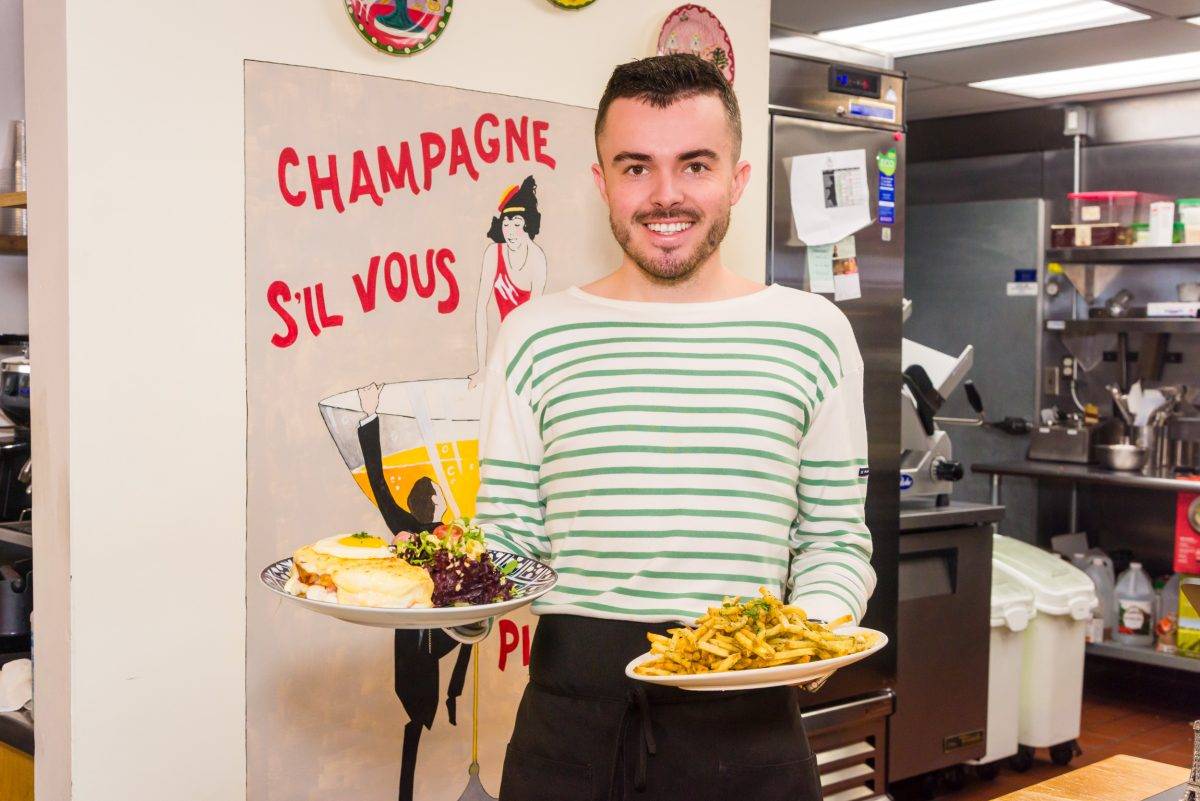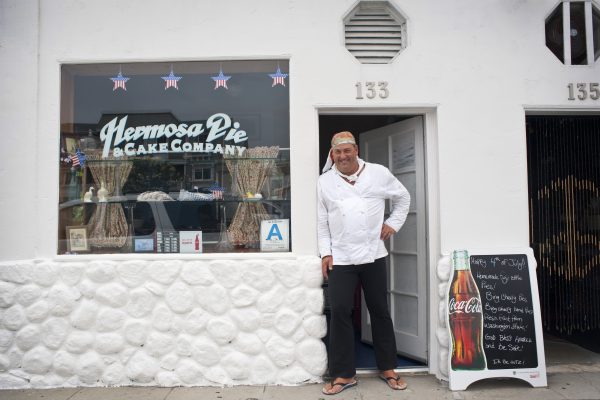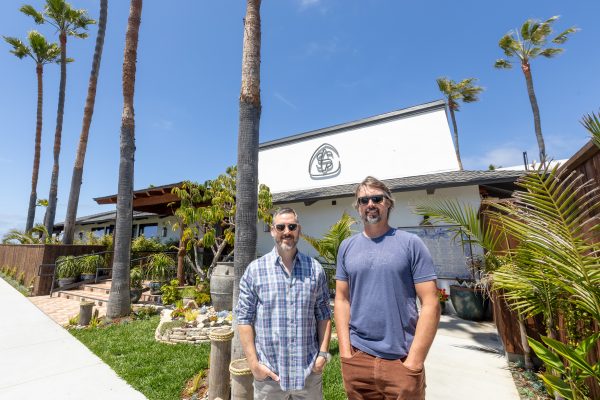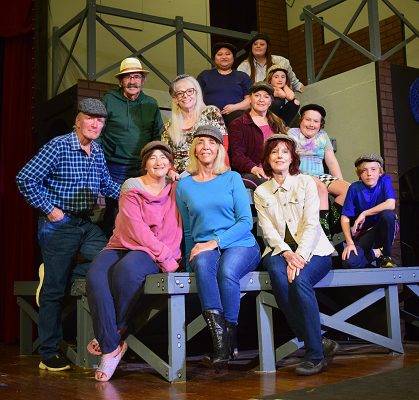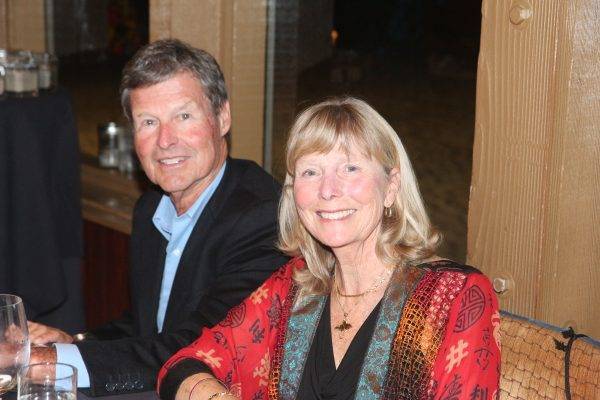by Richard Foss
The real estate mantra location, location, location is attributed to British property tycoon Harold Samuel (1912–1987), but is probably much older. It appeared in the Chicago Tribune in 1926, when he was just fourteen years old.
The glamour of a famous street still has an allure, as does a nice view, but there are practical considerations. In the Roaring Twenties, when just over 15% of the US population owned cars, a business near a train station or bus stop was desirable. Restaurants have always been more sensitive to location than most other businesses because of the way we spend our time there. A peaceful environment enhances the dining experience. Though we may shop for food next to a noisy auto shop, it’s not where we want to consume it. Proximity to a theater or other place where people with money and an interest in culture congregate is important, as is the general character of the neighborhood.
Even so, there are some successful restaurants on drab, loud streets. One of the most surprising examples is a newcomer called Delices du Chef, which opened on Crenshaw just south of Lomita Boulevard. The exterior of the building is architecturally dull, though a few café tables with red umbrellas add at least a splash of color. Once you walk inside, though, you might be in a village café in Normandy, with pastry cases full of country French specialties served by staff in traditional blue and white striped shirts. You’ll probably be greeted by proprietor Veronique Chopin, whose accented welcome always seems warm and genuine. If you’re there at lunch, take a good look at those cases as you head to your table and ask them to put aside anything you find particularly interesting – they sell out most days well before closing time.
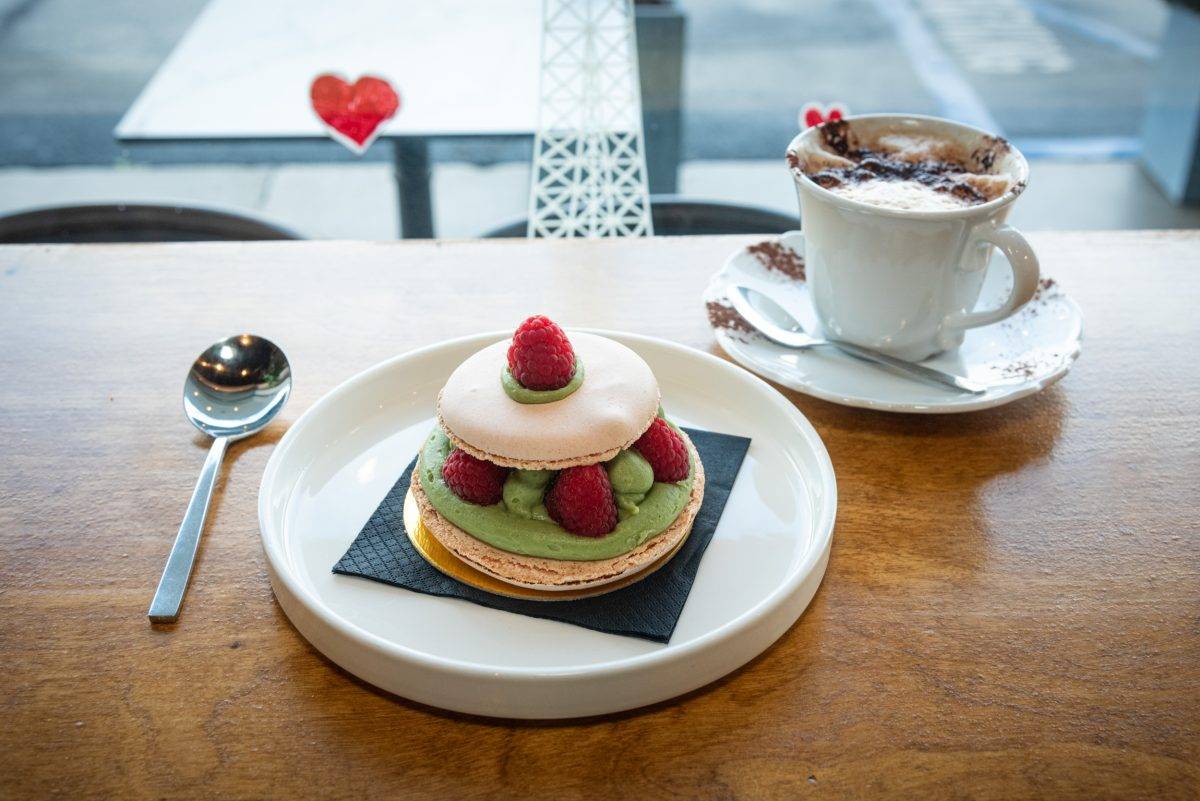
Normandy (also spelled Normandie) is the peninsula in the far west of France that is famous in the culinary world for apple cider, an apple brandy called Calvados, and a pastry called a kouign amann. The climate of the Atlantic coast is cool and rainy, and the area is known for dishes that are heartier and more delicately spiced than those from the more fashionable Mediterranean regions.
Breakfast at Delices du Chef includes items you’d see in any Parisian café like pain perdu and a gruyere and French ham omelette, and there are also a few American items like avocado toast and eggs benedict. The Arabic breakfast shakshouka is also on the menu, which might seem odd until you note that it was invented in Tunisia during the French colonial period. In Tunisia the poached eggs with bell pepper, onions, and garlic is often served with the sauteed vegetables intact, but here they are pureed and served over potatoes and pieces of cornichon pickles. The pickles add a vinegary tang to the spicy sauce that is very appealing, and contribute to making this a standout menu item. It’s served with a small salad and some toasted baguette with butter, and that baguette was so good that we had to buy one to take home.
Pain perdu, the French version of French toast, is on a completely different place in the flavor spectrum. Thick slices of pillowy bread are fried and topped with fresh chestnut cream, a topping of hazelnut nougatine, a crumbly, sweet confection made of caramelized nuts and sugar. Where the shakshouka is multi-textured and spicy, this is all balanced sweetness and decadent soft flavors. If you like having dessert for breakfast, this is your dream dish. It goes great with strong coffee, French roast naturally.
While those items are attractive to an American who enjoys starting the day with something substantial, most French people prefer something simple like a pastry, juice, a yoghurt parfait, and coffee, lots of coffee. If yoghurt sounds like a modern addition, you may be surprised that it has been part of the French diet since 1542, when a Turkish doctor prescribed it to a French king who suffered from a chronic upset stomach. It worked, and became part of the national morning ritual. In the 1890s a chef came up with the idea of layering custard with jam and nuts and calling it a parfait, and this was extended to yoghurt later. French yoghurt is lighter and more silky than the Greek-style yoghurt that dominates American grocery aisles. You’ll notice the difference when you order it here.
At breakfast we also tried duck rillettes, a ridiculously creamy and rich type of pate that is served with butter, jam, arugula salad, cornichons, and baguette slices. Trust me and try this – spread jam on the bread, then some rillette over it, and have a bite. Chase that with a bite of cornichon or salad. It is bliss. I don’t know what we were supposed to do with the butter, because the richness of the duck made it superfluous, but you can put it on something else.
We had to try some breakfast pastries, the apple turnover (because Normandy is famous for apples) and the kouign aman. The latter pastry has been having a moment in America – most people had never heard of them a decade ago, but they have proliferated, with highly variable results. The idea is simple – put croissant pastry in a muffin-type tin with sugar and cinnamon at the bottom, so that as it bakes a layer of caramel beneath it. When made perfectly, that crisp pastry had a crunchy base and soft interior – get it wrong even a little and it can be gummy or chewy. They do it right here, and also make the apple turnovers with a filling that expresses the sweet-tart balance of the fruit. I haven’t had a pastry here that I didn’t like, and plan to try them all just to be sure.
We returned for lunch and ordered a duck burger and scallops alla plancha – seared scallops and roasted butternut squash pieces over cauliflower puree, topped with sauce choron, tomatoes, and a sprinkle of chives. Choron sauce is bearnaise with a little pureed tomato, which I’ve usually seen served with steaks, but it worked very nicely here. The scallops were more than just a protein, with a buttery seafood flavor that complemented the vegetable puree. It’s a heresy to suggest it, but I liked the vegetables and sauce combination so much that I’d try substituting the scallops with mushrooms when I have vegetarians over to dinner.
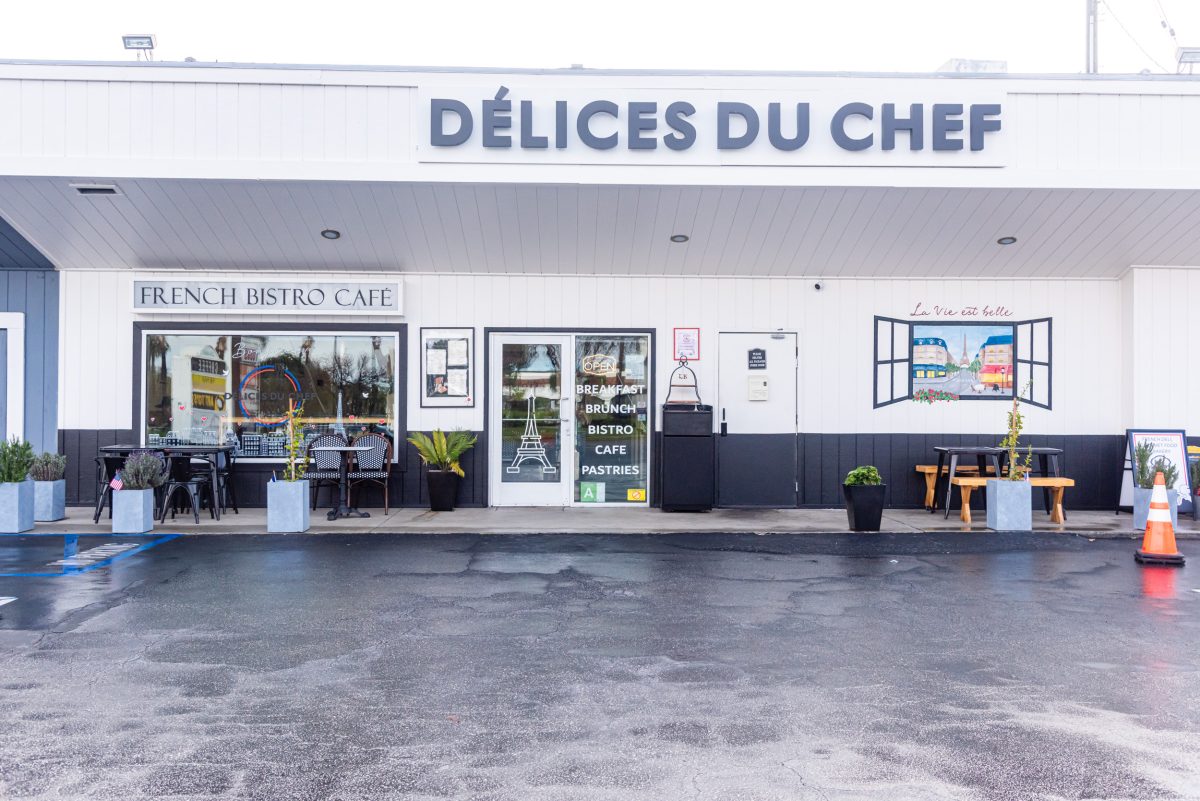
I had ordered the duck burger because the menu noted that it was seasoned with parmesan, walnuts, and tomato confit, and I really couldn’t imagine what that was like. The burger was cooked medium-rare, which is how I like duck, and as far as I could tell the idea was successful. Unfortunately the burger comes with brie cheese and jalapeno aioli, which were added in exuberant amounts. I’d order this again, but would ask them to put the aioli on the side. That aioli would be great with the French fries that arrived on a side plate, which were as crisp and perfect as though they were invented there. (They weren’t – Belgians have that honor.)
In the course of our visits we tried three desserts, a decadent dark chocolate tart, a Paris-Brest cake, and a Napoleon. The Paris-Brest cake was the best of the three, the choux pastry stuffed with nut cream a decadent indulgence, but all were very good. The Napoleon was made without the candy-like icing that often mars them, so you taste the pastry cream and subtle hints of baking spices between the crisp layers of pastry.
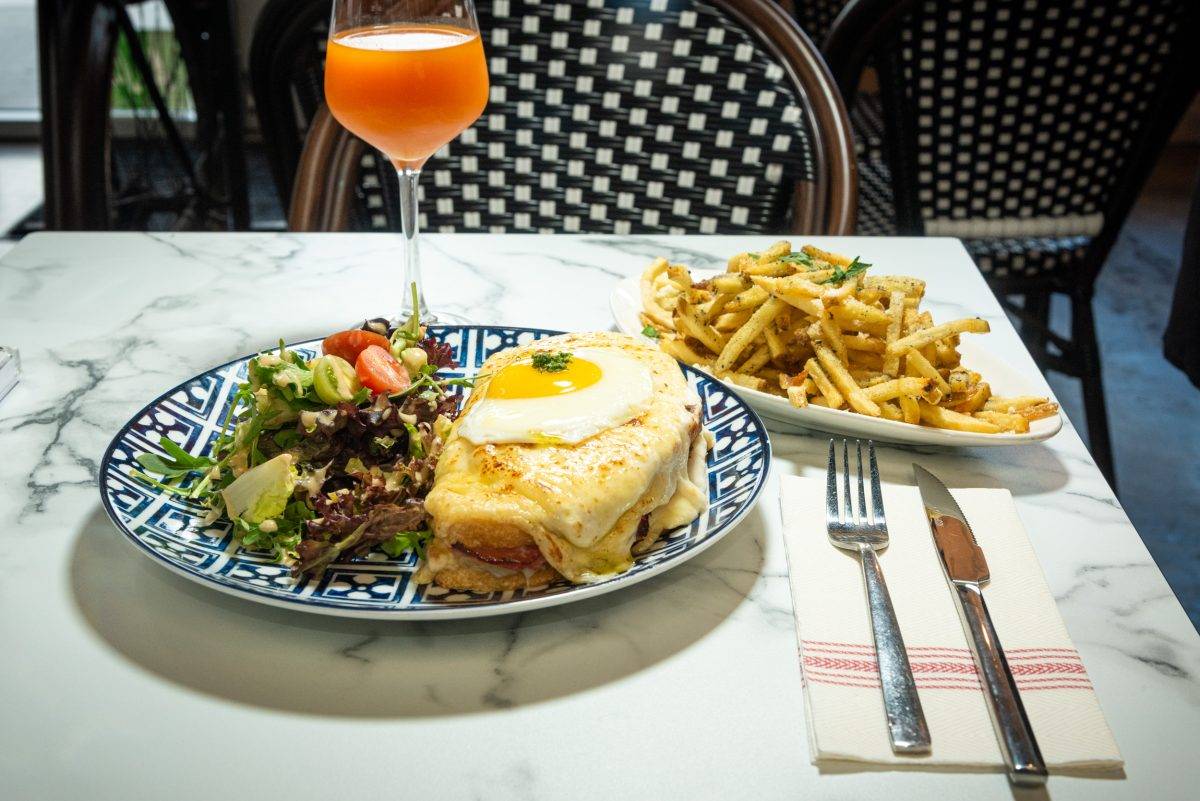
Delices du Chef is only open for breakfast and lunch. It has developed a devoted following in the few months they’ve been open, so you may have to wait a few minutes to dine here at peak times, maybe even more than a few minutes. It’s worth it for an experience that takes you to the French countryside.
Delices du Chef is at 24416 Crenshaw Blvd. in Torrance. Open daily 7 a.m – 4 p.m., parking lot, wheelchair access god. Wine and beer served. (424) 263-4759. DelicesDuChef.us. Pen

